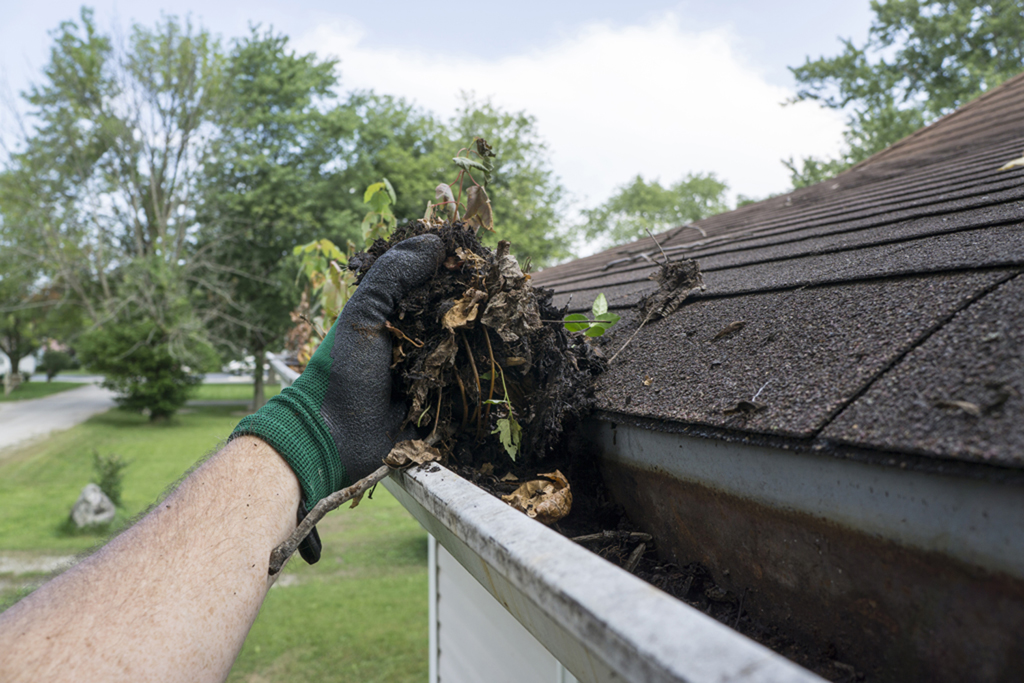You know it’s time. Don’t delay identifying and fixing any damage Old Man Winter left behind.
By Erik J. Martin
Content That Works
Somewhere on your property, the first signs of serious trouble left behind by Jack Frost are waiting to be discovered — if you are smart and brave enough to seek them out.
Spring is here and there’s no time to waste in locating and fixing the damage and disrepair caused by cold weather and neglect. Expand your spring cleaning agenda to include a thorough inspection for red flags inside and outside your home as soon as the cold weather breaks.
“Getting into a routine of inspecting your house for problems once a year when the weather warms is just plain smart, like getting an annual physical,” says Paul Quinn, head of claims customer experience at Farmers Insurance, Woodland Hills, Calif.
Small problems detected early can save thousands of dollars in repair costs.
“Roof damage, gutter issues, foundation cracks and other problems winter has wrought can often go undetected,” says Cheryl Reed, spokesperson for Angie’s List, Indianapolis.
Quinn recommends evaluating your home’s interior first, starting at the foundation and moving your way up. Be on the lookout for new or worsening cracks, gaps, water stains, warping, puckering, buckling or other signs that internal areas have suffered damage.
See if any water has collected in your basement or crawl space. Document and photograph any problem areas in case you need to consult with a professional about repairing the damage.
“Climb into your attic to see if you can spot any leaks that may have damaged insulation, left water stains on the wood or resulted in pests getting into your attic,” says John Bodrozic, co-founder of HomeZada, El Dorado Hills, Calif.
Now is the time for a professional inspection of your HVAC ducts to ensure that they are well-connected and properly insulated. Make sure the filters are changed.
On the outside, inspect for major cracks, gaps, or compromised areas in your stone, brick masonry and driveway. Look for damage to your home’s siding, windows and doors. Clean out downspouts and gutters and make your way up to the roof to check for damaged tiles/shingles, flashings and gutter attachments.
If possible, stay on the street level and use binoculars to inspect the roof for problems. “Only go up on the roof if you are in good health and have someone holding the base of your ladder for safety,” says Reed.
If you have a deck or wood windows, look for signs of wood rot and wear. Make it a goal to paint or seal any unprotected wood to prevent water damage.
Don’t forget about your home’s landscaping. Be mindful of trees, shrubs, vegetation or areas of soil that are pulling away from the home’s foundation, which can lead to water intrusion and foundation damage. Be on the lookout for loose or cracked branches from trees that could cause serious havoc if they fall. Prepare to trim away overgrown or dead vegetation, especially anything crowding your air-conditioning unit. And watch for patches of pink- or brown-colored grass, which can suggest snow mold, a grass-killing fungal disease that appears in spring as the snow melts and can require treatment.
“Now is also the time to start planning weed control and apply fertilizer and treatment to prevent weed growth. You should also prep flowerbeds by placing a layer of mulch no more than 3 inches deep, which aids in the temperature control of plants,” says Missy Henriksen, vice president for the National Association of Landscape Professionals, Herndon, Va.
When in doubt, hire a professional.
“This means hiring an expert to do an annual termite inspection, having a plumber do a walk-through of your house to look for wear and tear with your pipes, having someone check and clean your chimney at least annually and having a professional check your gas lines in all appliances at least once a year, too,” Quinn says.
A good rule of thumb is to budget several hundred dollars — between 1 and 4 percent of the purchase price of your home — for annual maintenance and repair.
“If the home is less than five years old 1 percent is a better estimate, but if it’s over 20 years old, 4 percent is a better estimate,” says Bodrozic.
© Content That Works

